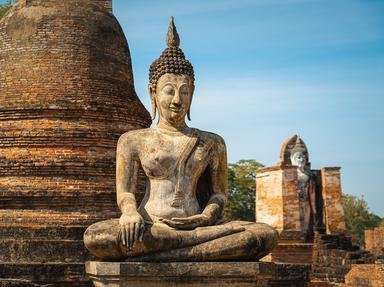Quiz Answer Key and Fun Facts
1. Rapa Nui is the native name of the island on which these statues stand. However, the island has a more common name. By what name is this remote island more commonly known?
2. In the native language, the iconic statues of Rapa Nui are called moai. What does the word mean in English?
3. What is the name of the flat platform or stone pedestal on which the moai stand?
4. After the statue was fully erected and in place, a pukao was placed on top of the statue. What was a pukao?
5. In terms of weight, what is the name of the largest completed statue on Rapa Nui?
6. Rano Raraku was the name of the quarry where most of the statues were made. Rano Raraku is situated inside of a what?
7. What is the name of the once-popular Swiss author who claimed the Rapa Nui statues were constructed by aliens?
8. The statues of Rapa Nui include a large number of petroglyphs which mostly depict the supreme divinity of the Rapa Nui mythology and creator of humanity. What is his name?
9. The moai kavakava was another type of Rapa Nui statue, a small male figurine, elongated and emaciated. What was it made out of?
10. Is it permitted to touch the moai?
Source: Author
tiye
This quiz was reviewed by FunTrivia editor
Bruyere before going online.
Any errors found in FunTrivia content are routinely corrected through our feedback system.
